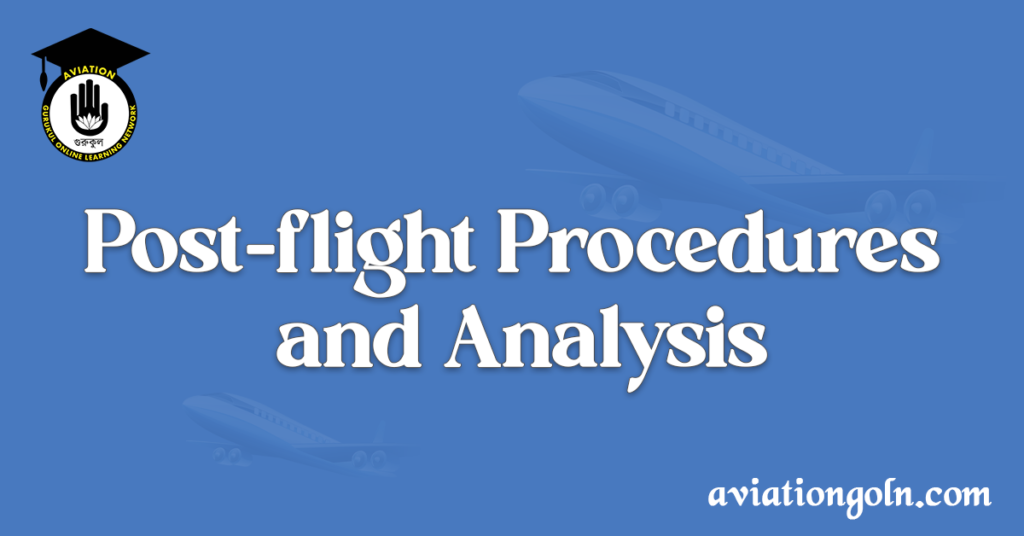The aviation industry is a marvel of modern engineering, seamlessly blending cutting-edge technology and human ingenuity to safely transport millions of people across the globe every day. Integral to the operation of modern aircraft is the Flight Management System (FMS). While many are familiar with the FMS’s pre-flight and in-flight functionalities, the post-flight procedures and analysis facilitated by these systems are equally vital. This article will delve into the intricacies of post-flight procedures and the crucial role played by FMS in these processes.
1. Introduction to Flight Management Systems (FMS)
The FMS is a specialized computer system that automates a wide variety of in-flight tasks, dramatically reducing the workload on the flight crew while improving the efficiency and safety of the flight. It integrates navigation, flight planning, fuel management, and other systems. Post-flight, the FMS can provide a treasure trove of data used for analysis, troubleshooting, and optimizing future flights.
2. Importance of Post-flight Procedures
Post-flight procedures are crucial for several reasons:
- Safety Assurance: Checking the condition of an aircraft after landing ensures that any wear and tear or damages incurred during the flight are immediately identified and addressed.
- Operational Efficiency: By analyzing flight data, airlines can optimize routes, reduce fuel consumption, and improve overall flight operations.
- Regulatory Compliance: Civil aviation authorities worldwide mandate routine checks and data recording to ensure adherence to safety and operational standards.
- Maintenance Forecasting: Analyzing post-flight data helps in predicting when parts might fail or when maintenance is due, thereby preventing unplanned downtime.
3. Post-flight Data Retrieval from FMS
Once an aircraft has landed, the FMS can be queried for various data, including:
- Flight Path Data: This includes the actual route taken, altitude changes, speed variations, and any deviations from the planned path.
- Engine Parameters: Information like fuel consumption, engine temperatures, thrust levels, and other critical engine metrics.
- System Alarms and Warnings: Any system alerts that were triggered during the flight, which can be indicative of potential issues.
- Environmental Data: External temperature, pressure, and other data that can be critical for specialized flights or for understanding unusual in-flight events.
4. Functionalities of FMS in Post-flight Analysis
The raw data from an FMS needs interpretation, and modern FMS units come equipped with analysis tools or can interface with external analysis software. These functionalities include:
- Trend Monitoring: By comparing data from multiple flights, operators can spot trends, such as a slowly degrading engine performance or consistent deviations in a particular airspace.
- Fuel Efficiency Analysis: Operators can determine if the aircraft is consuming more fuel than expected and if so, why. Factors might include flight path, engine performance, or external conditions.
- Performance Benchmarking: By comparing the performance of different aircraft in a fleet or comparing a single aircraft’s performance over time, airlines can make informed decisions about maintenance, replacements, or changes in operation.
- Flight Replay: Some FMS tools allow for a virtual replay of the flight, showing the aircraft’s path, altitude changes, and other parameters in a visual format, which can be invaluable for understanding specific events during the flight.
5. Feedback Loop to Pre-flight Planning
One of the most valuable aspects of post-flight analysis is the feedback it provides for future flight planning. For instance:
- If a particular route consistently experiences turbulence, future flights might be rerouted.
- If fuel consumption is consistently higher than expected, flight plans might be adjusted to include more fuel or find a more efficient altitude.
- Feedback on engine performance can be used to schedule maintenance or even change flight operations to reduce wear and tear.
6. The Evolution of Post-flight Analysis with FMS
As technology evolves, so do the functionalities of Flight Management Systems. Advanced FMS units now come with enhanced post-flight analysis capabilities:
- Integration with Maintenance Systems: Modern FMS can directly interface with Aircraft Health Monitoring Systems (AHMS), allowing real-time data analysis and faster maintenance turnaround.
- Cloud Data Storage and Analysis: With cloud computing, data from FMS across an entire fleet can be aggregated and analyzed collectively, providing insights that were not possible with isolated data sets.
- AI and Machine Learning: Advanced algorithms can now predict system failures, optimize flight paths in real-time, and provide other predictive analytics, all based on post-flight data.
7. Conclusions
The Flight Management System, while instrumental during a flight, plays a vital role even after the wheels touch the ground. Through detailed post-flight procedures and analysis, airlines and operators can ensure the safety of their fleet, optimize operations, and continually improve the flying experience for both crew and passengers.
As the aviation industry continues to grow and evolve, the functionalities of FMS in post-flight procedures will only become more integral. With advancements in technology, including AI and cloud computing, the potential for data-driven insights and optimizations is virtually limitless.
In the grand tapestry of aviation operations, post-flight procedures and analysis might seem like just one thread. But it’s a thread that, when woven with care and attention, can significantly strengthen the entire fabric of the industry.
See more:

